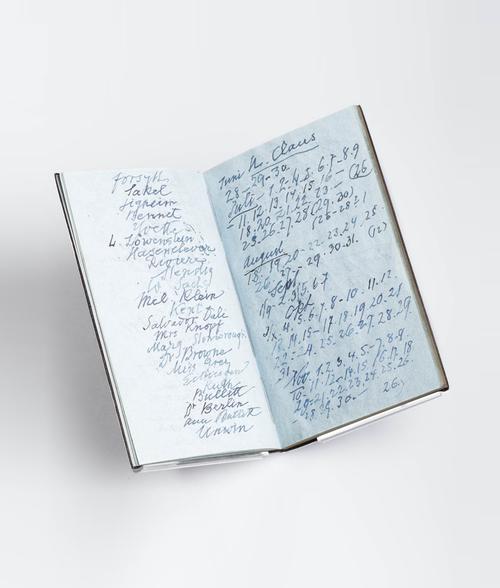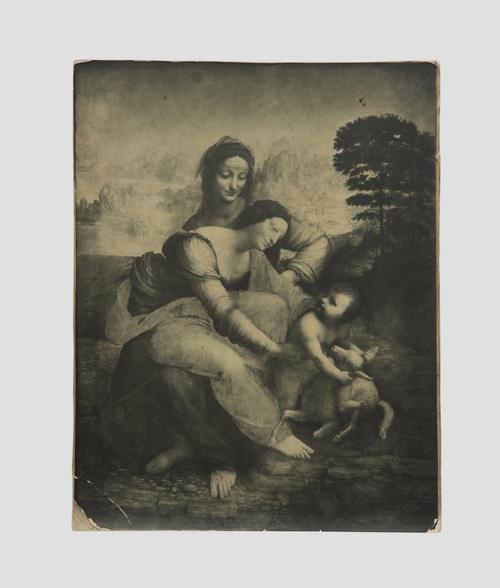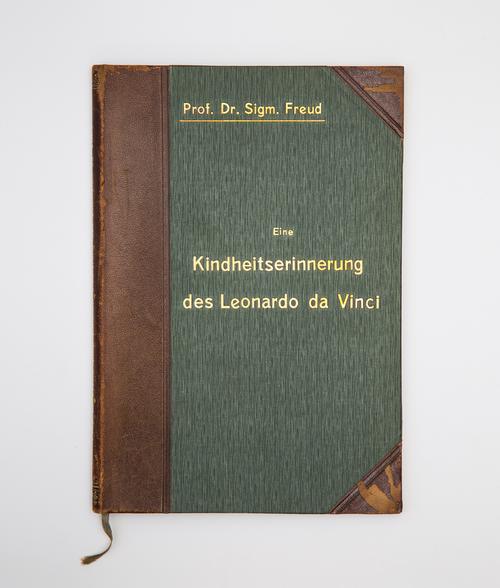
Symthson notebook containing list of Freud’s visitors, including Salvador Dalí 1938-1939
© Freud Museum London
On 19 July 1938, at the arrangement of their mutual friend Stefan Zweig, Salvador Dalí, Edward James and Zweig visited Freud at his London home, bringing with them Dalí’s painting Metamorphosis of Narcissus. After the visit, Freud wrote to Zweig that Dalí ‘has made me reconsider my opinion’ of the surrealists, whom he had previously thought of as ‘absolute (let us say 95 per cent, like alcohol) cranks’.

Print of The Virgin and the Child with St Anne and St John the Baptist by Leonardo de Vinci
© Freud Museum London
During his visit Dalí showed Freud the text “Interprétation Paranoïaque-critique de l’Image obsédante ‘L’Angélus’ de Millet”. Included in the article’s illustrations was Leonardo da Vinci’s ‘Virgin, Child Jesus and St Anne’ [sic], which particularly enchanted Dalí because of the double image Freud had drawn attention to in his work “Leonardo da Vinci and a Memory of his Childhood”: the “famous and invisible vulture” in the Virgin’s robes. No matter that the identification of a “vulture” in Freud’s analysis was based on a misinterpretation, what was important for Dalí was the double image itself.

Eine Kindheitserinnerung des Leonardo da Vinci [Leonardo da Vinci and a Memory of his Childhood] by Sigmund Freud, 1910
© Freud Museum London
The image of Narcissus is a potent one in the history of Western culture and beyond. Yet in Freud’s work, ‘narcissism’ includes a number of ideas that may appear contradictory. At one extreme narcissism describes the tragic megalomania of Daniel Schreber, imagining he is the only real person left in the world. At the other end of the scale, Leonardo’s narcissistic disposition, according to Freud, fuelled his creative genius.